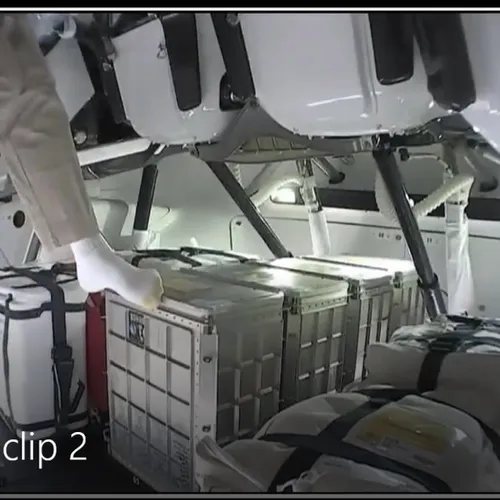Hardware
Unlocking the Future: Student-Made Lockers for the International Space Station
In an extraordinary fusion of education, innovation, and space exploration, high school students across the United States are stepping into the realm of aerospace manufacturing through NASA’s HUNCH Program (High school students United with NASA to Create Hardware). This initiative not only equips students with hands-on engineering skills but also prepares them to contribute to real-world space missions, including the remarkable journey of precision-machined lockers destined for the International Space Station (ISS) aboard a SpaceX rocket.
The NASA HUNCH Program: A Gateway to Innovation
Established to inspire students in the fields of science, technology, engineering, and mathematics (STEM), the NASA HUNCH Program pairs high school students with educators and NASA mentors. This collaborative effort empowers students to design, build, and test hardware that meets NASA’s stringent standards. The program fosters a unique learning environment where students can apply classroom knowledge to actual engineering challenges, culminating in contributions that are not only significant but also vital to ongoing space missions.
The Creation of Precision-Machined Lockers
At the heart of this endeavor are the precision-machined lockers, designed specifically to enhance life aboard the ISS. These lockers serve multiple purposes—from storage of crew supplies to housing scientific equipment—making them essential for the daily operations of astronauts in space.
1. Design and Engineering:
The journey begins with the design phase, where students employ computer-aided design (CAD) software to create detailed models of the lockers. Mentors guide students through the intricacies of aerospace design, emphasizing the importance of functionality, weight considerations, and materials that can withstand the rigors of space travel.
2. Precision Machining:
Once the designs are finalized, students transition to the manufacturing phase. Using state-of-the-art machining equipment, they meticulously craft each component of the lockers. Precision is paramount, as even the slightest deviation can affect performance in the microgravity environment of space. Students learn vital skills in machining, including milling, turning, and assembly, all while adhering to strict quality assurance protocols.
3. Testing and Quality Control:
Before the lockers can be cleared for shipment, they undergo rigorous testing to ensure they meet NASA’s safety and performance standards. Students collaborate with their mentors to conduct functional tests, simulate stress scenarios, and evaluate the lockers’ readiness for space. This phase is crucial, as it solidifies the students’ understanding of engineering principles and the importance of reliability in aerospace hardware.
Preparing for Shipment
After successful testing and quality control, the lockers are prepared for their momentous journey to the ISS. Here’s a step-by-step guide to the preparation process:
Step 1: Final Inspection
A comprehensive inspection is conducted to ensure that each locker meets NASA specifications. This includes checking dimensions, weight, and functionality.
Step 2: Cleaning and Packing
Lockers are thoroughly cleaned to eliminate any contaminants. They are then carefully packed in protective materials to safeguard them during transport. This step emphasizes the importance of cleanliness, especially in the controlled environment of the ISS.
Step 3: Documentation
A detailed inventory is prepared, including specifications, test results, and packing lists. This documentation is essential for tracking the hardware throughout its journey and ensuring accountability.
Step 4: Shipment to SpaceX
Finally, the lockers are transported to the launch facility, where they will be loaded onto the SpaceX rocket. This marks the culmination of months of hard work, collaboration, and creativity from the student teams.
The Impact of Student Contributions
The realization that their work will be launched into space is a profound moment for these high school students. It instills a sense of pride and responsibility, knowing that their efforts contribute directly to human exploration beyond Earth. As they watch the SpaceX rocket soar into the sky, the students are not just witnessing a launch; they are becoming part of a legacy of innovation and inspiration that will encourage future generations to reach for the stars.
Conclusion
The journey of student-manufactured lockers from classroom to cosmos is a testament to the power of education, collaboration, and innovation. Through the NASA HUNCH Program, students are not only gaining invaluable skills but also helping to advance space exploration. As they prepare the lockers for shipment to the ISS, they are unlocking a future filled with possibilities—both for themselves and for humanity’s endeavors in space. With each project, they are proving that the next generation of engineers, scientists, and explorers is ready to take on the universe.

